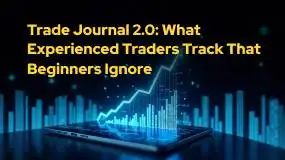简体中文
繁體中文
English
Pусский
日本語
ภาษาไทย
Tiếng Việt
Bahasa Indonesia
Español
हिन्दी
Filippiiniläinen
Français
Deutsch
Português
Türkçe
한국어
العربية
March Oil Production Declines: How Is the Market Reacting?
Abstract:Oil production cuts in March are reshaping the market. Traders are closely watching OPEC+ decisions and supply disruptions, which could impact prices and future production strategies.

In March, Nigeria's oil output fell by 50,000 barrels per day (bpd) to an average of 1.5 million bpd, aligning with its OPEC quota. Additionally, a fire at the Niger pipeline has disrupted the loading of Bonny Light crude, causing further delays. Meanwhile, OPEC implemented a broader production cut, reducing total output by 110,000 bpd to 27.43 million bpd, urging member countries to adhere to quotas despite ongoing violations by some nations.
To stabilize prices, OPEC+—led by Saudi Arabia and Russia—plans to gradually restore production capacity that has been offline for years. This move comes as concerns grow over certain members, such as Kazakhstan, exceeding agreed-upon limits. While Iraq cut its output by 40,000 bpd to 4.15 million bpd, it remains slightly above its agreed cap, with limited progress on compensatory cuts. Meanwhile, the UAE increased production by 30,000 bpd, further exceeding its quota.
Impact on Oil Traders
For oil traders, these developments create both risks and opportunities. Supply disruptions in Nigeria could tighten the market, supporting higher crude prices. However, the planned phased production recovery by OPEC+ may counteract this effect by gradually increasing supply. Traders must also navigate geopolitical uncertainties and policy shifts, as OPEC+ attempts to balance market stability with price control.
Market participants are also closely monitoring compliance levels among OPEC+ members. While some countries adhere to agreed limits, others continue to overproduce, affecting price volatility. With Iraq and the UAE's output exceeding quotas, traders must assess how these shifts impact global supply and pricing trends.
However, uncertainties remain. If demand weakens or geopolitical tensions escalate, OPEC+ may need to adjust its strategy. Furthermore, continued non-compliance among members could challenge the group's ability to manage supply effectively. Oil traders will need to stay alert, adapting to shifting production trends and potential price fluctuations in the months ahead.

Disclaimer:
The views in this article only represent the author's personal views, and do not constitute investment advice on this platform. This platform does not guarantee the accuracy, completeness and timeliness of the information in the article, and will not be liable for any loss caused by the use of or reliance on the information in the article.
Read more

Trade Journal 2.0: What Experienced Traders Track That Beginners Often Ignore
A Trading Journal is more than a basic record of trades. It’s a learning and improvement tool. Beginners often jot down only price and time. Experienced traders add deeper insight that helps them get better over time. Here's what they track:

6 Red Flags to Notice Before Investing in Neuron Markets
Investment scams have been rising over the last 5–6 years. Therefore, you need to be alert in the forex market, as many scam brokers are active and waiting to exploit inexperienced investors and traders. Neuron Markets is one such broker that appears genuine and makes big promises but ends up swindling investors’ money. Checkout red Flags and stay Safe

Future of Forex in India: Growth or Global Domination?
Every Trader or Investor in India who wants to invest in the dynamic forex market must read this important article. It explores the future of the forex market in India and answers a common question: Forex market will rise or crash in India ? Checkout the article below.

Exploring the Benefits of Forex Investments
The Indian forex market is $60 billion strong, courtesy of the belief that it yields significant returns for investors over time. The visually impressive technical analytic tools give investors an insight into the market behavior. Assessing it through varying currency price movements helps them take an informed call on position and account sizes. Explore this article to know the benefits of forex investments in greater detail.
WikiFX Broker
Latest News
Samsung Electronics signs $16.5 billion chip-supply contract; shares rise
Does XS.com Hold Leading Forex Regulatory Licenses?
European stocks set to rise after the U.S. and EU strike trade agreement
Elon Musk confirms Tesla has signed a $16.5 billion chip contract with Samsung Electronics
Chile Bumps Up Copper Price Forecast and Flags Lagging Collahuasi Output
Global week ahead: Crunch time for trade talks as Trump's deadline nears
Top Wall Street analysts recommend these dividend stocks for regular income
Stock futures rise as U.S.-EU trade deal kicks off a hectic week for markets: Live updates
Treasury yields tick lower as investors look ahead to Fed's interest rate decision
Thailand-Cambodia War Pressures Thai Baht in Forex Market
Currency Calculator


